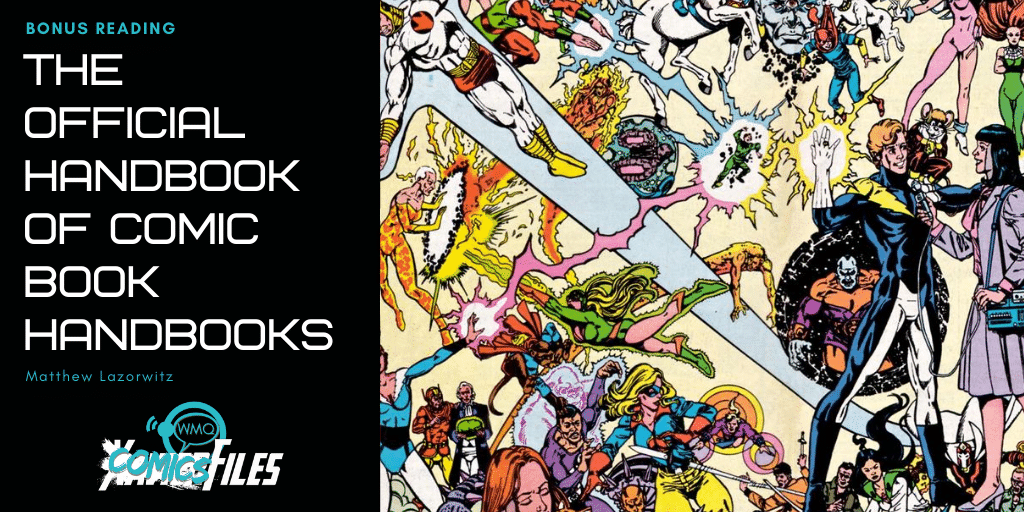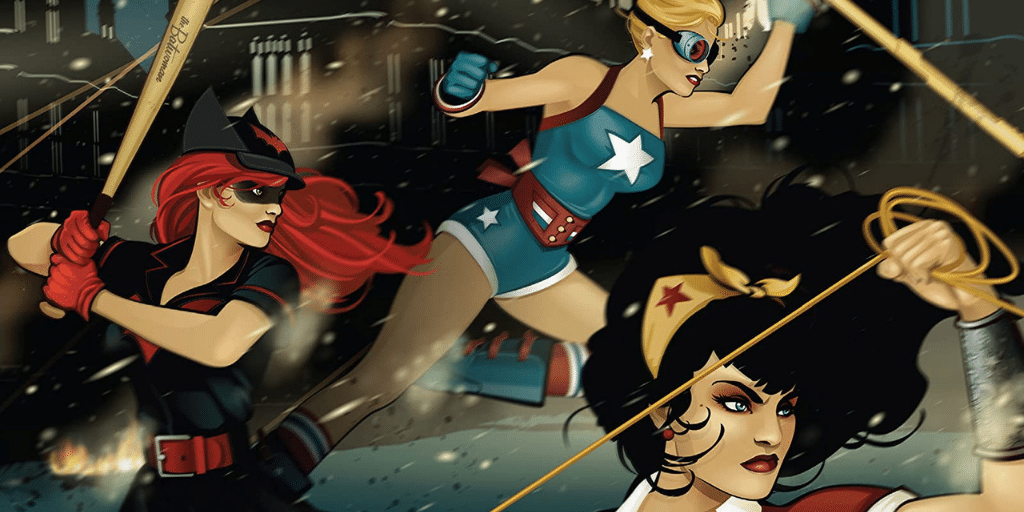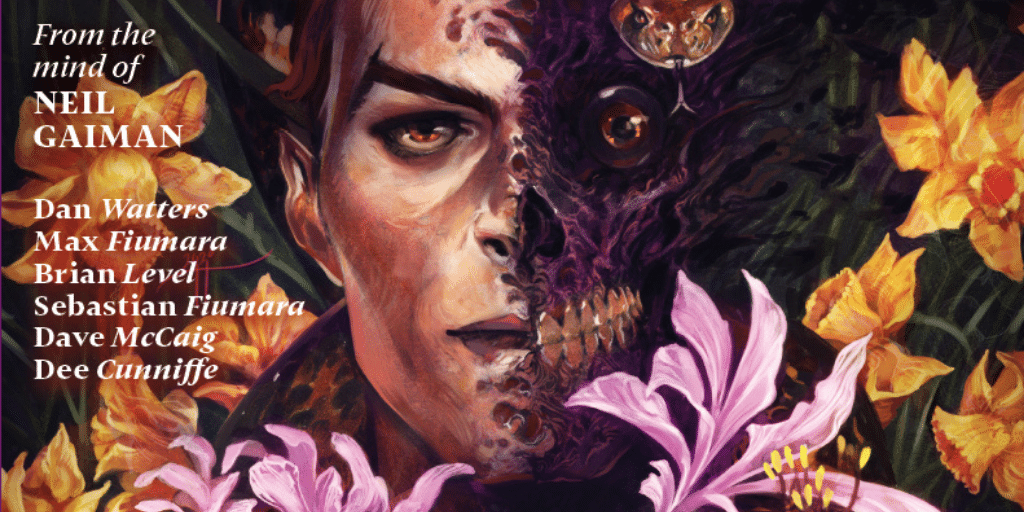There was once a dark age. A time when there was no internet. A time when the knowledge of comic book characters’ backgrounds could not be found in wikis, but in the memories of fans and in specially printed comics. Comics called handbooks or guidebooks. This week, DC released a guidebook to its “Dark Nights: Death Metal” crossover, which is not uncommon these days; Marvel has one coming for “X of Swords” in the not too distant future. So I wanted to look at the two foundational guidebooks of comics, and a third that is … just too delightful and completely insane for this introduction.
Official Handbook of the Marvel Universe

The first major handbook project in comics was “The Official Handbook of the Marvel Universe,” the first volume of which was published in 1982. Then Editor-in-Chief Jim Shooter put together a group of writers — including legends such as Mark Gruenwald and Mike Carlin, as well as Marvel historian Pete Sanderson — to craft the entries, with different pencilers, but Josef Rubinstein inking them all to give the book a consistent look.
The initial handbook had a very formal look to it, with an original frontal body shot, statistics, a paragraph focusing on the origin and basics of the character and their powers and an action panel drawn from a comic. The first volume was 15 issues, fully alphabetical, with issues #1 to #12 featuring current characters, while issues #13 and #14 were “The Book of the Dead” and issue #15 featured technology and weapons. A Deluxe Edition, featuring a full update, was released shortly after the original was concluded in 1986. It ran 20 issues, and an eight-issue update to that version was released in 1989.
The next version of the Handbook, The Master Edition, was 36 issues (the Marvel Universe just kept growing!) from 1990-93. This version was in a very different format: It was not a traditional comic, but instead a series of comic-sized loose-leaf pages. The front featured three views of the character — a front view, a profile and a rear view (and many, many lovingly rendered butts). Due to it being in looseleaf, the series wasn’t alphabetical anymore, but allowed the fan to pull it apart and sort it as they saw fit. The back featured clinical data, like the earlier versions, along with a character bibliography of major appearances.

Marvel would dip its toe back into the OHOTMU again in the 2000s, with some smaller miniseries, including another 12-issue handbook, and various themed issues or specials tying into specific events, but, as I mentioned in the introduction, the internet was there now, and so these were less in demand. There have still been event-based handbooks, but nothing since that Master Edition has quite captured the whole Marvel Universe.
Outside of the Marvel Universe, the publisher would use the same format for handbooks to some of their licensed products of the ’80s, including Transformers, G.I. Joe and Conan, the latter of which is due to be reprinted soon.
My personal connection with the OHOTMU isn’t strong, not as strong as that of WMQ&A third amigo Rob Lynch, who I believe has finally completed his collection of the original. I had a trade of the last few issues of the original, which featured all the Jim Starlin cosmic characters who were dead at the time, and the Transformers mini, which was fun. But my history with the second of the great handbooks? That’s something much more personal.
Who’s Who in the DC Universe

“Who’s Who in the DC Universe” was released a few years after the OHOTMU, in very late 1984, just as DC was getting ready to celebrate its 50th anniversary. The writers were no less legendary, with Marv Wolfman and Len Wein, as well as comic book scholar Robert Greenberger, writing the entries. The art, though, was nowhere near as uniform as its Marvel counterpart. “Who’s Who” featured dynamic shots of the characters, with unique logos for each, and art by many of the greatest names of the Silver and Bronze ages. Jack Kirby drew the entries for the New Gods, for instance. It made the book dynamic for its 26 issues out of the gate.
I’ve always been a DC guy. Most of that comes from my first exposure to comics, which was an issue of “Who’s Who.” I knew superheroes from the “Super Friends” cartoon and “Batman ’66” reruns, and I think I might have read some Archies or Marvel STAR comics, but the first comic to make any impression on me was “Who’s Who in the DC Universe” #2, which featured characters and concepts from Automan to Blackhawk Island. What that means is this issue featured Batman and most related concepts. It had Batman of Earth-1 and Earth-2. It had the Batcave, Batmobile and Batman’s Utility Belt. It had Batgirl, Bat-Girl and Batwoman.
I read that issue over and over. Somehow, it didn’t fall completely apart, as I found it when we were cleaning out my grandparents’ house. I found some other issues of “Who’s Who” in that stack of old comics, but none of them were quite as memorable to me as that one. That issue captured my imagination: How cool were these characters? Alternate Earths with multiple versions of them? I didn’t start buying my own comics for another few years, but I think, from that moment on, I was doomed to this life I now lead.

It took me years to finish out the collection of that original volume of “Who’s Who,” but I finally got all of them at a con last year … just in time for DC to announce a hardcover omnibus collection of them coming out at the end of this year. Because that’s how it always works.
DC did two updates to the series, five issues in 1987 and four in 1988. In 1989, DC included Who’s Who supplemental pages in all the annuals for the year. Then in 1990, DC also went with the looseleaf format like Marvel did (This seems like a “Deep Impact”/”Armageddon” thing, as they came out close enough together that it would be hard for one to copy the other), with 16 issues and a two-issue update the year after it was published. But again, as opposed to the very formal look and structure of the OHOTMU Master Edition, the new “Who’s Who” swung for the fences on design. It was sized like a magazine, not a comic, with a full-sized pin-up style illustration on the front and text on the back. The artists were again top talent associated with the character. Issue #1’s cover and Superman entry were drawn by Jerry Ordway, many entries for members of the JLI were by Adam Hughes, and Batman and the Batmobile’s entries were drawn by the now late, great, Norm Breyfogle.
And as with the OHOTMU, since this was loose leaf, DC didn’t make the series purely alphabetical, and by the end did a couple themed issues. Issue #13 featured many of DC’s top villains, under a Brian Bolland Joker cover. And issue #15 was entirely Vertigo characters. Imagine an 11-year-old Matt completely befuddled by all these trippy characters from “The Sandman,” “Doom Patrol” and “Swamp Thing.” DC was also a little more tongue-in-cheek with some of the entries; I still remember to this day issue #8’s entry for Death, the sister of Dream from “The Sandman.” You get a Mike Dringenberg-drawn front, and when you flip it over, in big blue lettering simulating handwriting, “One day you’ll meet her. You can find out for yourself.”

I received the first four issues of this series, and the first of the two custom binders for my 10th birthday, and that was the absolute hit of the birthday. I got toys and stuff, too, but I can’t remember any of those.
As with Marvel, DC would make some spin-offs to “Who’s Who.” They did a seven-issue miniseries for the Legion of Super-Heroes, since the world of the Legion future is so incredibly packed with characters and has such a loyal fanbase. They also did a two-issue series for one of their major licensed projects, Star Trek, in the late ’80s. At the time of the loose leaf volume, DC did a three-issue spin-off focused on its Impact Comics imprint, where DC took the old Archie/Red Circle heroes and brought them into the ’90s as a mostly all-ages superhero universe.
Unfortunately, after that ’90s edition, DC never really went back to “Who’s Who.” It still did guidebooks, its “Secret Files and Origins,” books, which blended character bio pages with short stories and text pieces, and many of those are great, but there never was a comprehensive guide to the DC Universe again. There was talk about one right before DC decided to do the massive New 52 reboot, but that quashed the project, and there has been no real talk of it since, and the current, in flux, state of DC publishing doesn’t make me expect to see one any time soon.
DC Super-Pets Character Encyclopedia

Other comic companies and universes have done handbooks over the years. Valiant has done a few. Robert Kirkman released guidebooks for both of his tentpole series, “Invincible” and “The Walking Dead.” And they’re all fine, but there’s nothing spectacular or groundbreaking in there. But a couple years ago, children’s book publisher Capstone released a character encyclopedia that still boggles my mind.
Art Baltazar is probably best known as one of the co-creators of “Tiny Titans,” the reimagining of the Teen Titans in elementary school. I would assume, because of that, he got the gig to draw a series of chapter books featuring various Super-Pets. After about 20 of those, he teamed up with DC archivist and editor Steve Korte to create the “DC Super-Pets Character Encyclopedia.” And it is glorious comic book nonsense at its absolute best.
So, of course there are the Super-Pets you expect: Krypto the Super-Dog, Ace the Bat-Hound, Streaky the Super-Cat, Batcow, Mr. Tawky Tawny. Then there are the characters who are dubiously pets, but more animal heroes, like G’Nort and B’dg, who are Green Lanterns; Detective Chimp and Skeets, Booster Gold’s robot who I think could be safely argued to be Booster’s keeper rather than the other way around. There are deep cuts from the comics like Jumpa the Kangaroo from Paradise Island and Zook, the little alien who was Martian Manhnter’s sidekick in the Silver Age. But this is a book with over 200 Super-Pets, so Korte and Baltazar get … creative.

The other pets feel like a case of a kid in a huge room with an expansive collection of DC Comics action figures and an expansive collection of stuffed animals, and the kid has decided to pair every animal up with one action figure, no matter how weird the animal is. My personal favorite is Gumshoe, Commissioner Gordon’s pet aardvark; this tells you Gotham’s exotic-pet laws are as lax as the security at Arkham Asylum. There’s Brainicat, a green Grumpy Cat-looking cat who hangs out with Brainiac. Osito is a luchador mask-wearing bear cub who hangs out with Bane, and is named after the teddy bear young Bane had in prison (It’s clear the creators did their research). And there are competing bayou swamp pets, including Swamp Thing’s Down Home Critter Gang (Hey, Will Nevin, there’s a possum named Merle in there) and Solomon Grundy’s Undead Pet Club. Yup, zombie critters. This book is a joyous celebration of all the wonderful madness so many forget is at the foundation of superhero comics, and should probably be remembered a little more often.
Matt Lazorwitz read his first comic at the age of 5. It was Who's Who in the DC Universe #2, featuring characters whose names begin with B, which explains so much about his Batman obsession. He writes about comics he loves, and co-hosts the podcasts BatChat with Matt & Will and The ComicsXF Interview Podcast.






